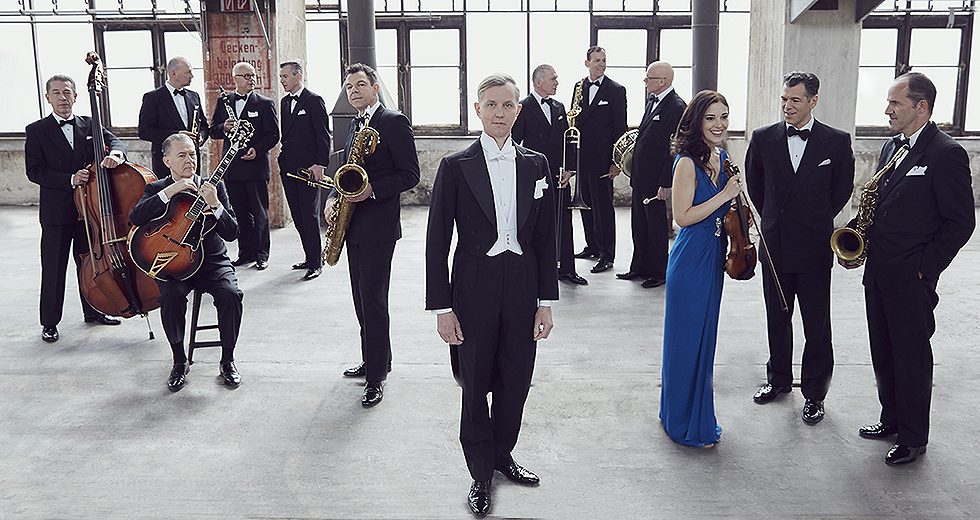
When Max Raabe was a 12-year-old living in Lünen, Germany, he discovered a 78-rpm record his parents owned but rarely played: “I’m Crazy About Hilda.” It was an instrumental and sounded like nothing his ears recognized.
The format, the record itself, and the music on it were all old, even pre-dating his parents. “There was a melancholy in the music,” he says. “It was like keeping an ear next to a door to another world. I was touched.”
The experience informed his teenage years as Raabe began visiting flea markets and record shops in search of more 78 records from England and Germany, most with exotic labels and featuring singers and dance bands with foreign names he didn’t recognize. Gradually over time, he started performing songs from his collection while accompanied by only a piano. It wasn’t until he enrolled at the Berlin University for the Arts to study opera that he assembled a proper orchestra to present the music he first heard as a young man.

The music of the ’20s and ’30s was written “to get away from reality,” says Max Raabe, “and it’s still working.” | Photo: DG
“There was something in the way the saxophones played and the trumpets’ vibrato and the special attitude and warm sound. I was touched by these charming and funny songs,” he says. “I don’t know why. But it was just like that immediately.”
Raabe arrives April 20 at Symphony Center with the Palast Orchester, a 12-member ensemble that continues its mission of presenting music from the early recording era that is not often performed today. Founded in 1985, the group now has a repertoire of 600 songs from the late 1920s and early 1930s before swing music became the dominant pop music of that time. Many songs will be familiar — “Stormy Weather” written by Harold Arlen and Ted Koehler and “Let’s Do It” by Cole Porter — but others are German popular and cabaret songs from the Weimar era. Dressed in tuxedos and gowns, the group suggests the elegance of musical groups from that time period. Raabe, 55, is a dapper crooner in the style of Fred Astaire.
His group has more than 20 recordings to its name, which means the musicians are also performing 80 to 90 concerts around the word. Traveling with 12 musicians, a crew and all those instruments is not easy. “It isn’t practical but we do it,” he says. But there is one reward. Raabe is always on the hunt to find written arrangements of the songs they play, which gets them closer to the original sound of the time, opposed to learning the songs by ear.
“We want to see how they worked — how they built the harmonies, how the saxophone sections were built,” he says. “We want to keep up the original arrangements because otherwise we might confuse the styles and mix them up with our own way of doing things.”
His quest once led Raabe to the Chicago Public Library. In the library’s vast archive are more than 26,000 scores for dance bands from the 1920s and 1930s: “We spent the whole day there. It was like Christmas.”
In performance, the music may have a preciseness to the time it originated, but many of the lyrics and emotional threads have relevancy for modern ears.
“For me, the music is timeless, whether the tune is fast or slow or funny or warm or elegant,” he says. “Even if there’s a funny phrase, people are laughing at the same time in the music when they did 80 years ago. Because the quality is there. The music was written to get away from reality, and it’s still working.”
Chicago-based journalist Mark Guarino writes for the Guardian, Crain’s Chicago Business, the Washington Post, Salon, the Chicago Tribune, Reuters, Agence France-Press and other outlets.
TOP: Max Raabe and the Palast Orchester. | Photo: Gregor Hohenberg